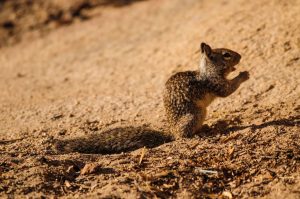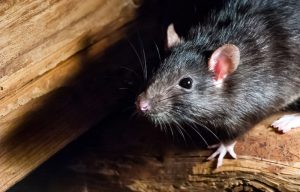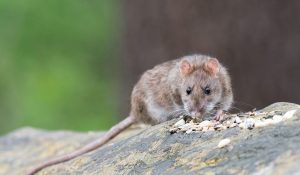Rats, like the common brown rat (Rattus norvegicus) and the black rat (Rattus rattus), are adaptable and opportunistic when it comes to finding food.
Their diets vary greatly in the wild or urban settings, depending on what’s accessible.
Nonetheless, they exhibit a preference for certain types of food when given the choice.
In this blog, we’ll provide a comprehensive overview of what these rats commonly eat.
Key Takeaways
- In the wild, rats eat a variety of foods, including nuts and seeds, plants, fruits, insects and small invertebrates, fungi, carrion, and garbage and human scraps.
- In the house, rats eat grains and seeds, fruits and berries, nuts, meat scraps, pet food, and garbage.
- If you have a rat infestation in your house, contact a professional pest management expert like Smith’s for help getting rid of these pesky rodents.
13 Foods Rats Love to Eat
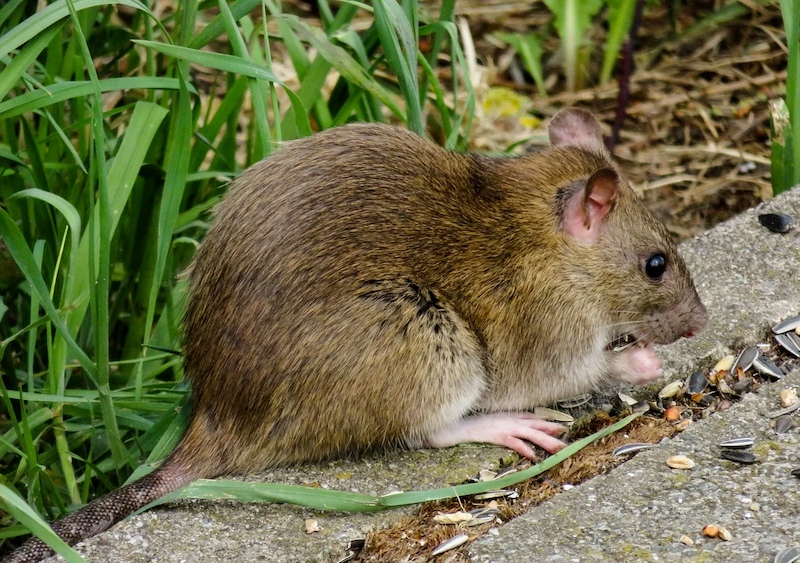
In the Wild
- Seeds and Nuts: Rats in the wild often feed on a variety of seeds and nuts, including sunflower seeds, pumpkin seeds, and sesame seeds. When it comes to nuts, they love walnuts, peanuts, and almonds. These foods provide them with essential fats, proteins, and other nutrients. This diet component mimics their natural foraging behavior, as these items are commonly found in their habitats.
- Fruits: Fruits are a favorite among wild rats, offering them a rich source of vitamins, sugars, and water. However, they tend to eat fruits in moderation due to their high sugar content.
- Plants: They consume an array of plants, including leaves, stems, and roots, which are a source of hydration and fiber. Some plants also offer medicinal properties that can aid in digestion or act as natural repellents against parasites.
- Insects and Small Invertebrates: Rats are opportunistic eaters and will consume insects and small invertebrates, which are a crucial protein source and may also offer certain fats or other nutrients not found in plant material.
- Fungi: They will also consume fungi like mushrooms, which can provide a variety of nutrients; however, rats have to be selective to avoid toxic varieties.
- Carrion: Occasionally, rats scavenge, eating carrion — dead animals — which though not a primary food source, is part of their opportunistic dietary habits, especially in times of scarcity.
- Garbage and Human Scraps: In urban environments, rats often consume garbage and leftovers from humans. While not a natural part of their diet, this often becomes a significant food source due to the easy accessibility and abundance in human-populated areas.
In the House
- Grains and Seeds: Often found in pantries, rats are drawn to cereals, rice, quinoa, and birdseed because these foods are rich in carbohydrates and easy to nibble on.
- Fruits and Berries: These sweet treats are attractive to rats due to their high sugar content, attracting them to fruit bowls or gardens.
- Nuts: High fat content and the protein in nuts make them a satisfying and energy-dense snack for rats.
- Meats: Rats are opportunistic omnivores. Leftover meat scraps or packaged jerky provide them with a hearty meal rich in protein.
- Pet Food: Dry pet food is often left in bowls overnight, making it an easy target for hungry rats seeking protein and carbohydrates.
- Garbage: Household waste offers a smorgasbord of discarded food items, making trash bins a common feeding site for pests.
Proper storage of food items and regular waste disposal are critical in preventing rat infestations, as limiting access to food sources is an effective deterrent.
What Should I Bait My Rat Traps With?
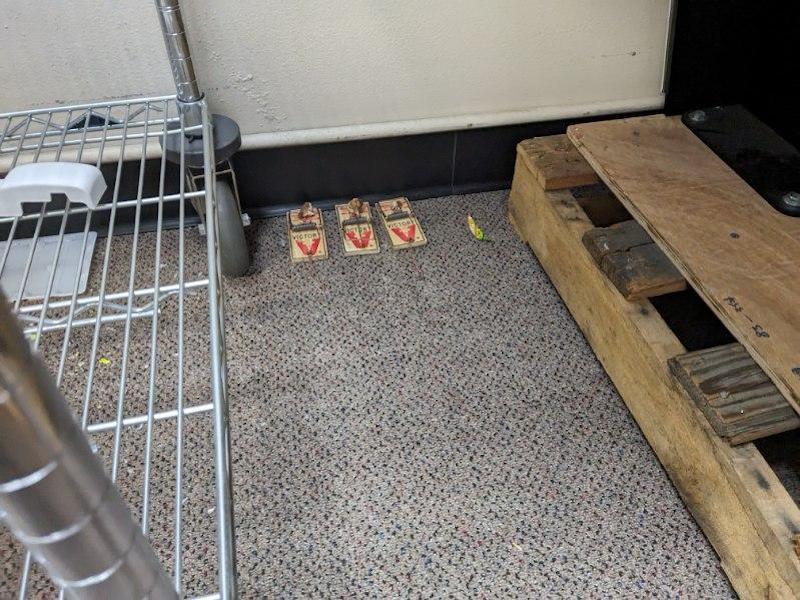
When setting up a rat trap, choosing the right bait is crucial to successfully capturing these elusive rodents. Rats have a keen sense of smell, and certain foods can attract them more effectively than others.
Here’s a quote from our founder, Zach Smith:
“People are often surprised to find that rats are picky eaters. Where sometimes, peanut butter or beef jerky will catch a rat, other times they will show no interest in these savory foods at all. Rats will eat almost anything, but they are very habitual in their diet. So if a rat is generally focused on eating snails, the rat will not eat anything else if snails are available. It is hard to put snails in a rat trap. (I have heard of people super gluing a snail to the trap and catching a rat). What’s important is to try various foods and see which ones the rats will go for. Then use those foods on all of your traps.”
With that in mind, here are some of the best options to consider:
- Peanut Butter: Not only is peanut butter’s aroma irresistible to rats, but its sticky nature also makes it difficult for them to swipe the bait without triggering the trap. A small dollop is usually sufficient.
- Cheese: The stereotypical favorite, cheese, can indeed be effective, especially strong-smelling varieties like cheddar or blue cheese. It’s best to use a small piece that’s tied firmly to the trap to prevent easy theft.
- Meats: Small pieces of bacon or sausage can be extremely enticing for rats. Their strong smell and fatty content can lure rats from afar. Similar to cheese, it’s wise to secure these tightly to the trap.
- Sweets: Rats have a sweet tooth, so a tiny bit of chocolate or a jam smear can work wonders. These should be used sparingly, as they can also attract ants and other unwanted pests.
It’s important to note that while these baits can be effective, the placement of your traps and ensuring a clean environment to minimize alternative food sources are also key factors in successful rat capture. Always wear gloves when handling traps and bait to prevent the transfer of human scent.
For more information on trapping rats, check out our guide.
What Do Rats NOT Like to Eat?
While many people believe that rats are voracious and will eat anything they can find, that’s not actually true.
Below is a list of foods that rats generally dislike:
- Hot peppers: The capsaicin in hot peppers is a natural rat deterrent. Rats tend to avoid foods or areas that have been treated with hot pepper flakes or sprays.
- Garlic: Similar to hot peppers, rats dislike the strong aroma of garlic.
- Raw onions: Thanks to their strong smell, rats generally dislike and will avoid raw onions.
How to Prevent Rats in Your House
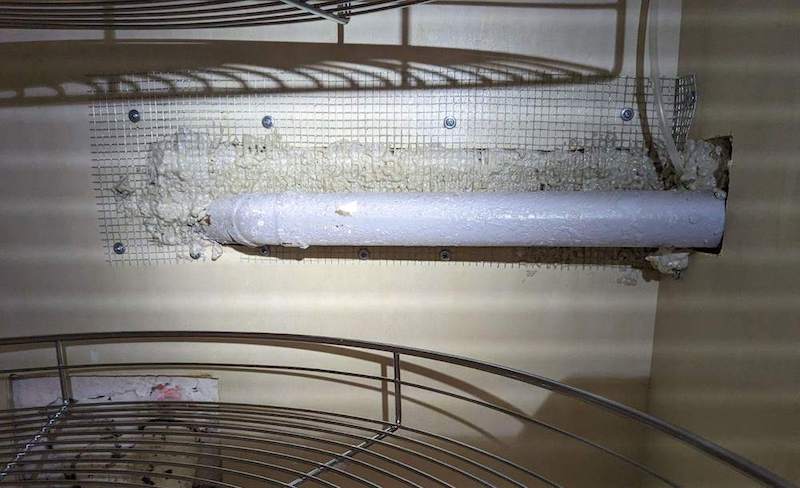
- Store all pet food, including dog and cat food, in airtight containers or bins immediately after feeding times. Rats are opportunistic feeders, so any exposed food can attract them into your living spaces.
- Make sure that your kitchen is free of food scraps by cleaning dishes immediately after use and sweeping up any food debris from the floor.
- Regularly take out the trash and use bins with secure lids to keep the scent of food waste from attracting rodents.
- If you compost, use a well-sealed compost bin rather than an open pile since the latter can be an inviting source of food for rats.
- Routinely inspect your home for any small holes or gaps and seal them promptly. Rats can squeeze through tiny openings, so closing off potential entry points is critical. Use materials such as steel wool, metal mesh, or concrete patching compounds, which are less likely to be gnawed through by rodents.
To learn more about getting rid of rats, check out our comprehensive guide.
Do You Have Rats in or Around Your San Francisco Bay Area Home? We’re Here to Help!
Are rats taking over your lawn, garden, or home? You don’t have to live with them forever. Here at Smith’s Pest Management, we provide comprehensive, professional rat control services.
Ready to learn more or request a quote? Contact us today.
FAQs
How do rats get into homes?
Rats can invade homes through a variety of avenues, taking advantage of any small gaps or openings.
Common entry points include holes in the foundation, gaps around doors and windows, and openings where pipes and electrical wires enter the home.
Even small cracks as slight as a quarter-inch wide can allow these persistent rodents to squeeze through, given their flexible skeletal structure.
Once inside, they often nest in dark, secluded areas such as attics, basements, and wall cavities.
Regular inspection and maintenance of your home’s exterior can significantly reduce the likelihood of a rat infestation.
What are the risks of rats?
Rats pose several risks to humans and the environment, including the spread of diseases.
These rodents are known to carry bacteria and viruses that can lead to health issues such as Hantavirus, Leptospirosis, and the bubonic plague.
They also can cause significant structural damage by gnawing on wires, insulation, and wood, potentially creating fire hazards.
Furthermore, rats can contaminate food supplies and living spaces with their droppings, which can lead to the onset of allergic reactions and asthma-like symptoms in sensitive individuals.
Their presence can also adversely affect local ecosystems by preying on native species and disrupting natural habitats.
How can I get rid of rats?
To effectively eliminate a rat infestation, start by sealing up any entry points in your home to prevent more rats from getting inside.
Remove potential food sources by keeping food in sealed containers and maintaining a clean environment.
Utilize traps, opting for snap traps or live traps, depending on your preference.
If the problem persists, contact a professional pest control service for more severe situations.
Remember, proper sanitation and prevention are key to keeping rats away long-term.



